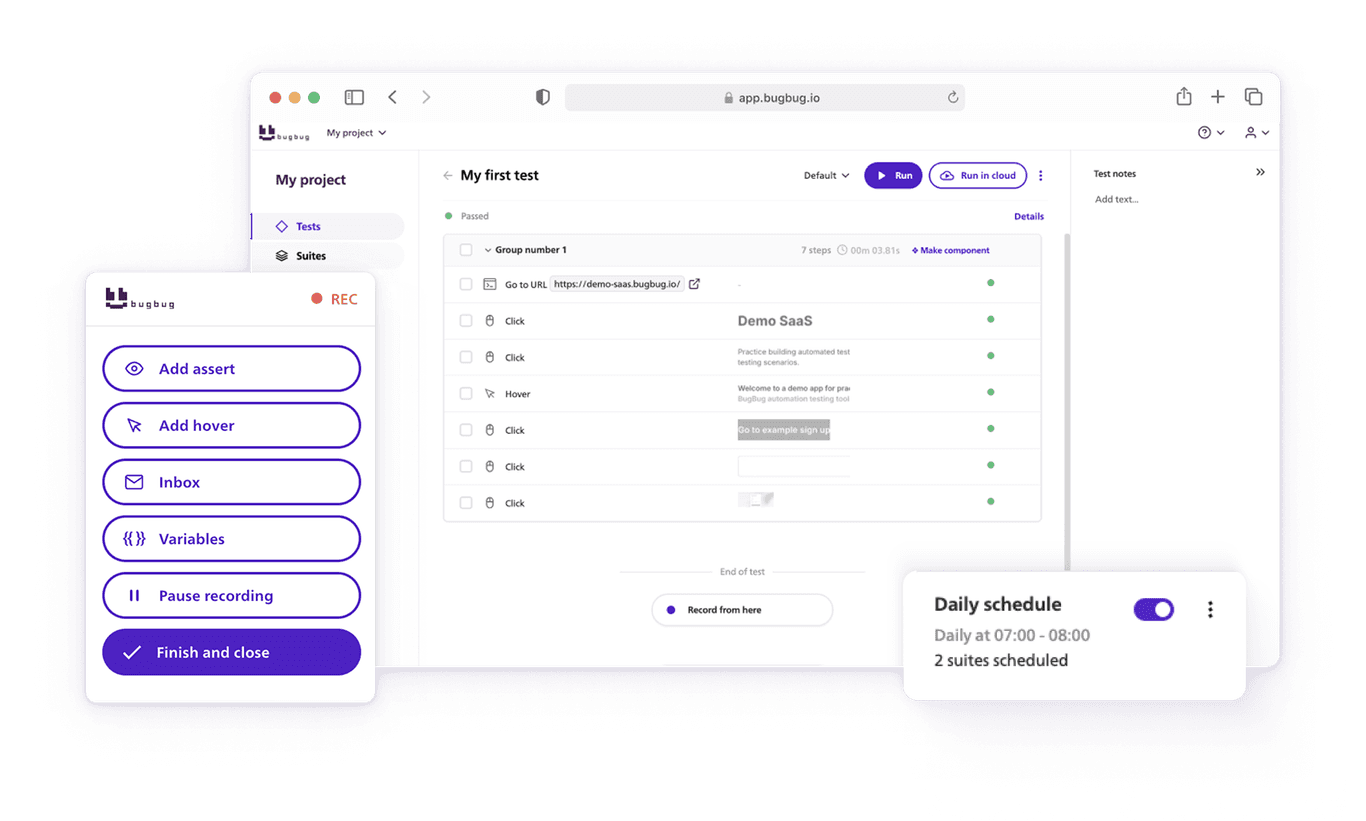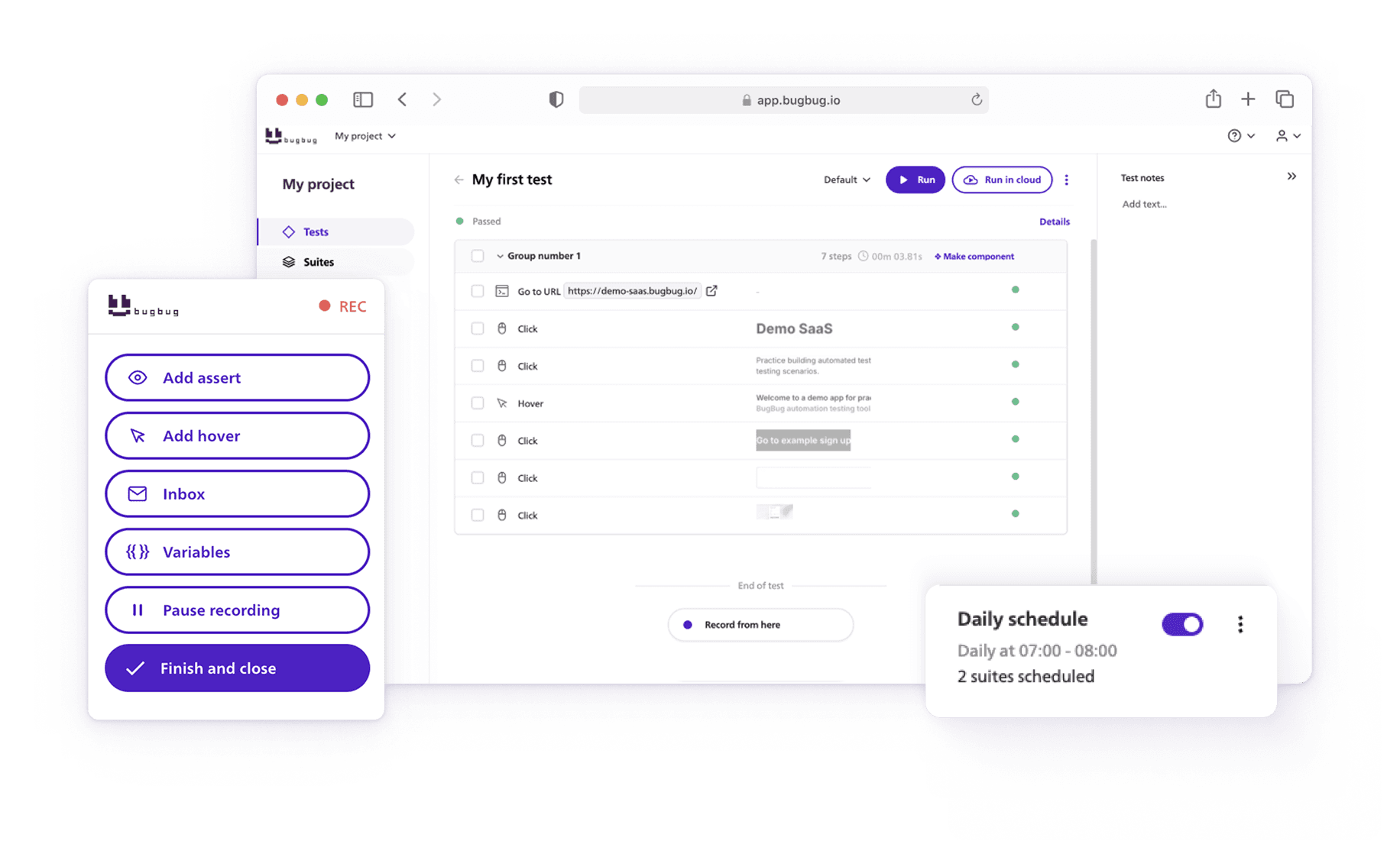- 🎯 TL;DR – Testing Strategy for Startups
- What Is a Software Testing Strategy?
- Why Startups Need a Testing Strategy (Even If You're the Sole QA)
- Core Principles of a Startup Testing Strategy
- Building Your Test Strategy Document: The Essential Components
- Types of Test Strategies to Consider
- Adapting Your Strategy Over Time
- Final Thoughts: Build a Testing Strategy That Scales With You
Startups operate in a high-stakes world where speed and innovation are everything — but none of it matters if your product doesn’t work as expected. A single buggy release can break user trust, slow adoption, and drain precious momentum. That’s why having a solid test strategies in software testing isn’t optional — it’s a survival tool.
The challenge? Unlike enterprises with dedicated QA departments, startups must balance limited resources with the need for reliable, continuous testing. You can’t afford bloated processes or week-long regression cycles. You need a lean, scalable approach that protects quality without slowing development.
In this guide, we’ll show you how to build exactly that — a practical, startup-friendly testing strategy that delivers fast feedback, combines manual and automated testing intelligently, and evolves as your product (and team) grows.
🎯 TL;DR – Testing Strategy for Startups
- Startups need a lean, scalable testing strategy to avoid costly bugs while keeping development fast—early validation and a mix of manual and automated testing are key.
- Focus on high-impact areas first, like core user flows, payments, logins, and integrations; prioritize testing that protects user experience and business functionality.
- Build a lightweight but structured test strategy document that outlines scope, goals, tools, environments, responsibilities, and defect management processes.
- Leverage cost-effective tools like BugBug for codeless automation, Postman for APIs, and CI tools to integrate testing into Agile or DevOps workflows.
- Evolve your strategy as you grow, starting with manual testing, then layering in automation, continuous integration, performance, and security testing as needed.
Check also:
What Is a Software Testing Strategy?
A software testing strategy is a high-level document that defines the overall approach, scope, goals, and timelines for testing activities across your product or organization. Unlike a test plan, which is project-specific and detailed, a test strategy outlines the "big picture"—helping teams align on how quality will be ensured.
For startups, this document provides clarity amid chaos. It ensures testing isn't an afterthought but an integral part of the development cycle, helping you release better software faster.
Why Startups Need a Testing Strategy (Even If You're the Sole QA)
Let’s face it—startups are often resource-constrained. You may not have a dedicated QA team, let alone time for formal test plans. But that’s exactly why a strategy is so critical. Here’s what it brings to the table:
- Clarity: Sets clear testing priorities and avoids wasted effort.
- Focus: Helps you test what matters most—core features, critical flows, and high-risk areas.
- Consistency: Ensures testing is repeatable and reliable, even in fast-moving sprints.
- Risk Management: Identifies and mitigates issues before they become disasters.
- Scalability: Lays the groundwork for future automation and CI/CD practices.

Core Principles of a Startup Testing Strategy
To make it actionable for startups, your strategy should be lean, iterative, and user-focused. Here are the key principles:
1. Start with Early and Iterative Validation
Instead of waiting until development is done, testing should begin as early as possible. Adopt a Shift Left mindset by integrating testing into design and development phases.
- MVP Testing: Validate the most important functionality early with real users.
- Concept Testing: Use mockups or clickable prototypes to test ideas before building.
- Continuous Feedback: Test and refine in short cycles using Agile or DevOps practices.
2. Balance Manual and Automated Testing
You don’t need to automate everything on day one—but the right mix saves time and effort:
- Manual Testing: Great for exploratory testing, UI/UX reviews, and uncovering unexpected bugs.
- Automated Testing: Ideal for regression, unit, and integration testing—especially for repeatable checks.
- Hybrid Approach: Start with manual testing, then automate stable, high-value tests.
💡 Tools like BugBug offer codeless automation that’s perfect for startups looking to add automation without writing code.
3. Focus on Key Functionalities and UX
Your users won’t care about edge-case bugs if the main flow is broken. Start by testing:
- High-traffic user flows
- Payment and login systems
- Integrations and APIs
- Accessibility and responsiveness
- Usability from the end-user perspective
Apply a User-Centric Testing Strategy—test how real users interact with your product. Gather feedback through User Acceptance Testing (UAT) or even lightweight Beta Testing.
Building Your Test Strategy Document: The Essential Components
Even a lean startup strategy should be documented. Here's a breakdown of what to include:
1. Overview and Objectives
Start with the “why.” What are you trying to achieve with testing? Align objectives with your business goals.
Example:
Ensure that critical features of the MVP function correctly across supported browsers and devices, with test coverage for 80% of user flows.
2. Scope of Testing
Define what’s included—and what’s not. Be realistic based on resources.
- Included: Core features, supported browsers, desktop and mobile.
- Excluded: Legacy features, deprecated platforms.
3. Testing Types and Levels
Specify the levels (unit, integration, E2E) and types of testing (functional, performance, security, etc.).
For startups, focus on:
- Functional Testing for primary features
- Regression Testing to ensure changes don’t break things
- Exploratory Testing for unexpected behaviors
- Load/Performance Testing if user spikes are expected
4. Test Approach and Methodology
Explain how testing will be conducted:
- Agile-based with sprints and continuous feedback
- Mix of manual and automated testing
- Prioritize Risk-Based Testing—focus on high-impact features
Automate your tests for free
Test easier than ever with BugBug test recorder. Faster than coding. Free forever.
Get started
5. Test Environment
Define where testing will happen:
- Use staging or pre-production environments
- Simulate production-like conditions
- Leverage cloud testing tools (like BrowserStack) for cross-device testing
6. Tools and Frameworks
List the tools your team will use. For startups, cost-effective or open-source options are ideal:
- BugBug: Codeless E2E automation for web testing
- Jira/Trello: For tracking bugs and tasks
- Postman: For API testing
- Playwright or Cypress: If you’re ready for low-code/advanced test automation
- CI Tools: GitHub Actions, GitLab CI, or Jenkins for automation pipelines
7. Roles and Responsibilities
Even if you’re a solo tester, define who does what:
- Developer: Write unit tests and fix bugs
- Tester: Write and execute test cases, run exploratory sessions
- Product Owner: Validate features meet acceptance criteria
A shared quality mindset across roles is essential.
8. Test Data Management
Plan how test data will be generated and maintained—especially if using real user data is off-limits. Use fixtures, mock data, or tools like Faker.js.
9. Test Deliverables
Even in lean environments, you need documentation:
- Checklists or lightweight test cases
- Bug reports
- Test run summaries
- Feedback from users (for UAT or Beta Testing)
You can skip formal documentation in favor of Notion pages, Slack threads, or Google Docs—just ensure knowledge is shared and traceable.
10. Entry and Exit Criteria
Define when to start and stop testing.
Entry: Feature code is complete, unit tests passed
Exit: No critical bugs, core flows pass E2E tests, stakeholder sign-off
11. Defect Management Process
Outline how bugs will be tracked and prioritized:
- Use tools like Jira or Linear
- Assign severity levels
- Set up clear SLAs for critical bugs
12. KPIs and Metrics
Measure the success of your testing efforts:
- Test Coverage: How much of the product is tested
- Defect Density: Bugs per feature or lines of code
- Mean Time to Detect (MTTD) / Resolve (MTTR)
- Bug Reopen Rate: Indicator of test quality
Types of Test Strategies to Consider
Based on your goals, choose one or combine multiple strategies:
| Strategy | Description |
|---|---|
| Risk-Based | Focus on areas with the highest business or technical risk |
| Regression-Based | Ensure updates don’t break existing features |
| Exploratory | Unstructured, discovery-driven testing—perfect for startups |
| Agile/Continuous Testing | Integrated into CI/CD pipelines for fast feedback |
| User-Centric | Validate the product based on real-world user scenarios |
| Crowdtesting | Leverage external testers for diverse device/browser coverage |
| Compliance-Based | Essential for regulated industries (e.g., fintech, healthtech) |
Adapting Your Strategy Over Time
Startups grow—and so should your strategy.
- Begin with lightweight manual testing
- Add BugBug for low-maintenance test automation
- Build pipelines for CI/CD integration
- Expand to advanced monitoring, security, and performance testing
- Review and update your strategy with every major product or team shift
Automate your tests for free
Test easier than ever with BugBug test recorder. Faster than coding. Free forever.
Get started
Final Thoughts: Build a Testing Strategy That Scales With You
To ensure successful testing outcomes and deliver a high-quality software application, startups must take a practical yet structured approach to the software testing process. Here’s how to get started and evolve your approach:
- Define clear test objectives aligned with your business goals to focus the efforts of your testing team.
- Create a comprehensive test strategy document that outlines your test levels (e.g., unit testing, system testing, stress testing) and supports the overall software development process.
- Establish a solid test environment setup by identifying essential hardware, software, operating systems, and dependencies needed for consistent results.
- Select and apply different software testing strategies such as static testing strategy, structural testing strategy, and user-centric testing techniques like usability testing.
- Incorporate automation testing where it adds value, particularly in repetitive testing tasks, to accelerate test execution and improve testing progress.
- Ensure comprehensive test coverage by prioritizing critical user flows and validating system behavior through both manual and automated procedures.
- Use effective test management tools to organize your testing schedule, track bugs, and monitor testing progress across the software development lifecycle.
- Implement security testing and performance validations as part of a thorough testing plan to maintain quality and reliability.
- Align your strategy with a clear test criteria framework, and communicate it effectively among team members to ensure consistency and collaboration.
- Reference a test strategy document example to help guide your structure and format as you scale.
By focusing on these essentials, you’ll establish an effective software testing process that supports growth, enhances the user interface, and drives long-term success for your software project.
👉 Ready to scale your testing without hiring a full QA team? Try BugBug – the codeless test automation tool made for lean teams.
Happy (automated) testing!



